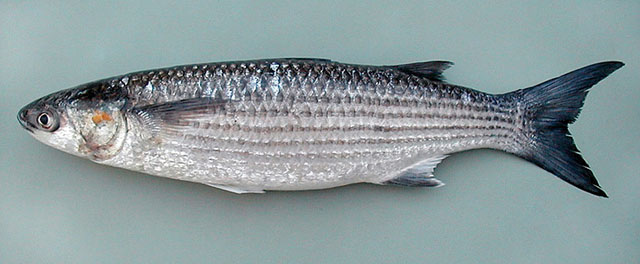| Mugilidae (Mullets) |
| 61 cm FL (male/unsexed); max.weight: 2,500.0 g |
|
pelagic-neritic; freshwater; brackish; marine; depth range 10 - 20 m, catadromous |
| Eastern Atlantic: Scotland to Cape Verde; in the Mediterranean and Black Sea. Also in coastal waters from southern Norway to Morocco, rare off Mauritania (Ref. 3573). Records from the lagoon of Accra are probably misidentifications. |
|
Dorsal spines (total): 5-5; Dorsal soft rays (total): 7-9; Anal spines: 3-3. Longer pectoral fins, lack of black spot at the pectoral fin base. Golden spot present in gill cover (Ref. 35388). |
| Adults are neritic usually in schools, entering lagoons and lower estuaries (Ref. 7399); rarely entering freshwater (Ref. 3573, 59043). Juveniles move to coastal lagoons and estuaries in winter and especially in spring (Ref. 59043). They feed on small benthic organisms, detritus, and occasionally on insects and plankton (Ref. 2804). Juveniles feed only on zooplankton (Ref. 59043). Reproduction takes place in the sea, from July to November. Oviparous, eggs are pelagic and non-adhesive (Ref. 205). Minimum size allowed for fishing is 20 cm. The quality of the flesh is variable (Ref. 30578). |
|
Least Concern (LC); Date assessed: 01 January 2008 Ref. (130435)
|
| harmless |
Source and more info: www.fishbase.org. For personal, classroom, and other internal use only. Not for publication.

